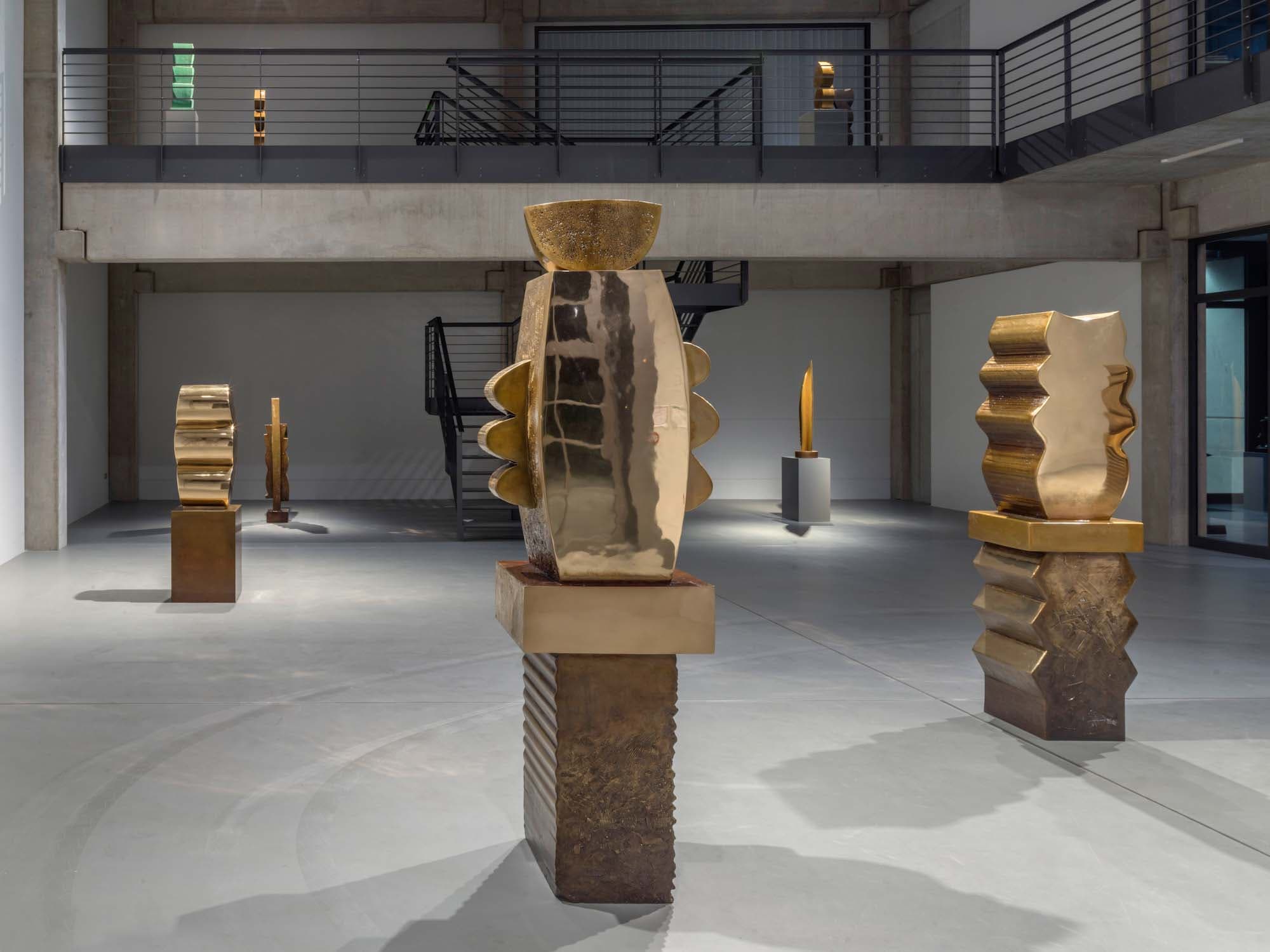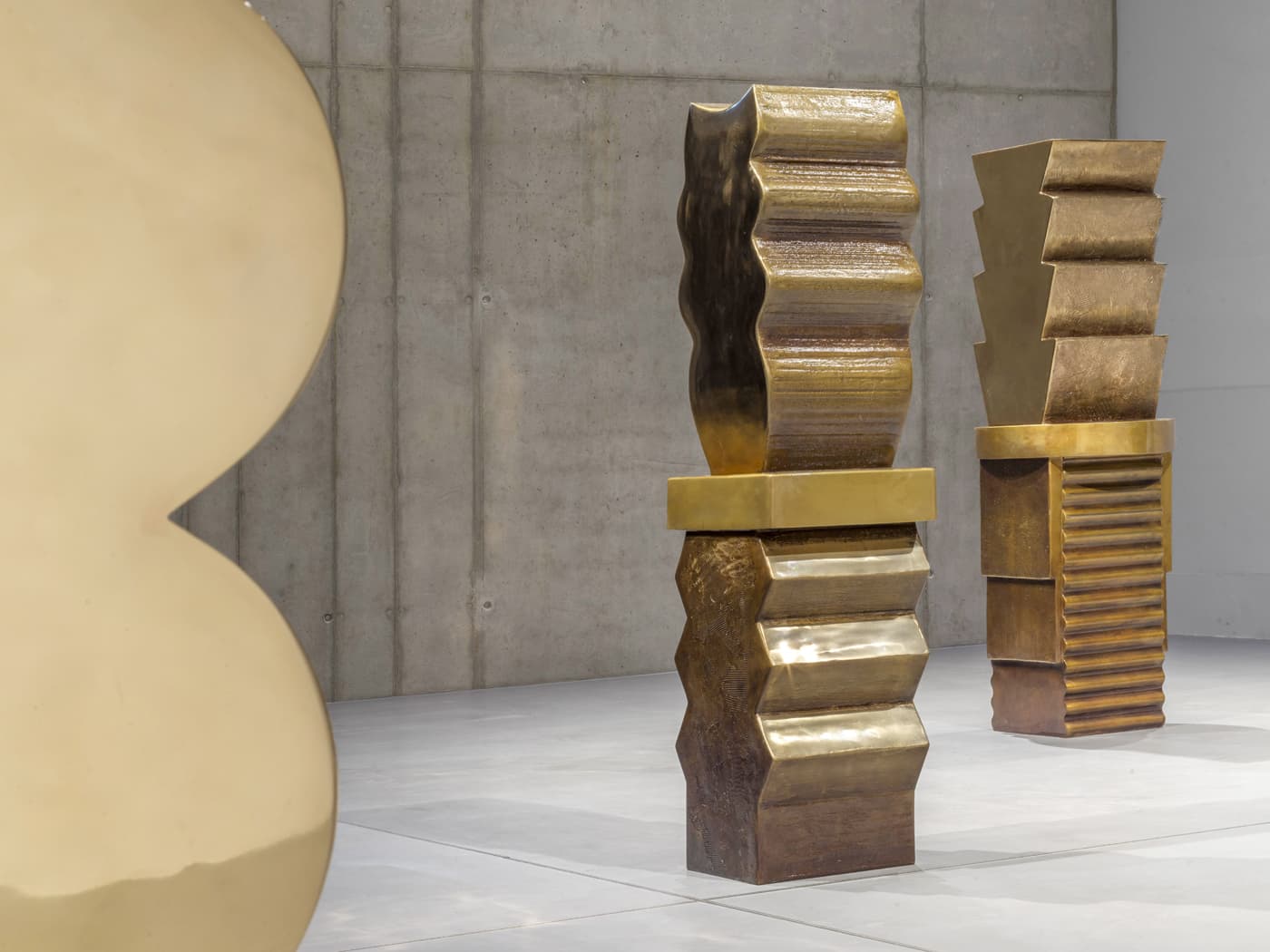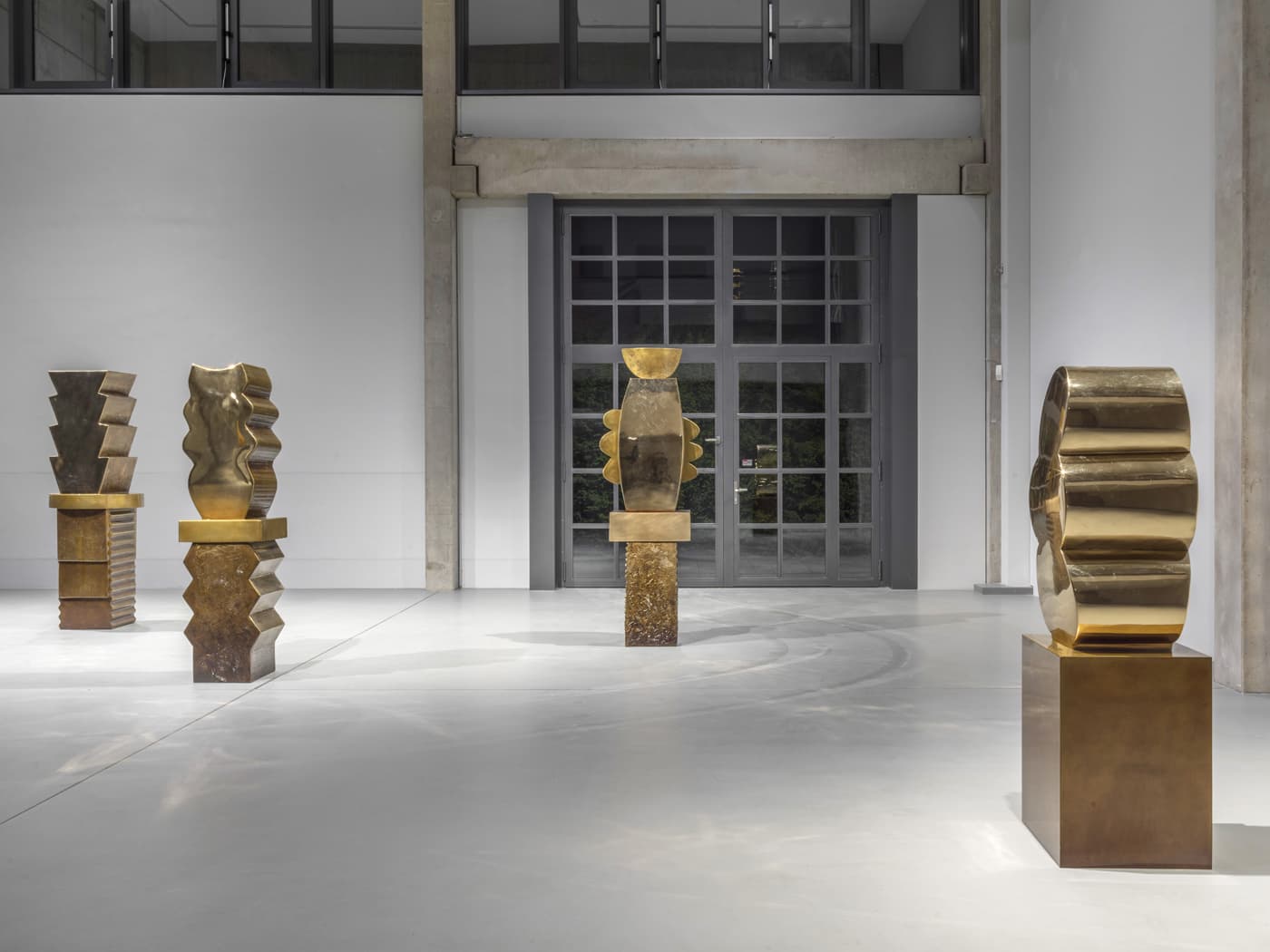



Heinz Mack has worked with the Hermann Noack bronze foundry on a regular basis since 1984. More than thirty sculptures were created: works that are less than one metre high, as well as 10 or even 18 metre high steles that were created for a public space - such as the monumental "Obelisk" on Berlin's Henriettenplatz at the western end of Kurfürstendamm or the 30 metre high "Licht-Pfeiler" (Light Pillar) in front of the Europacenter. For the first time, Noack Gallery is now dedicating an exhibition exclusively to the artist's bronzes. Eight works from the eighties and nineties are on display, as well as five sculptures that have only just been completed in the last few weeks.
Heinz Mack, born in 1931, has played a decisive role in shaping post-war art since the founding of the ZERO movement in 1957/58. His light steles, light reliefs and ZERO paintings as well as his pioneering expeditions to the desert and the Arctic became world-famous. He also created kinetic objects, shimmering and shimmering grid structures, bold photomontages that turned entire cities into utopian places of art, and even paintings that illustrate the physical laws of color in a complex way. Mack's art was always guided by a view of the future, by the conviction that art can realise utopias. He was always inspired by progress, and he incorporated innovations in technology into his sculptural work in a variety of ways.
Mack had not worked with bronze since his student days at the Düsseldorf Art Academy in the early fifties. Instead of bronze casting, one of the oldest inventions of mankind, which had existed for thousands of years, he favoured new artistic techniques that he developed himself. Since 1984, however, it "grabbed" him and he began to explore how he could use the heavy bronze for his art. "The sculptures come to life when they have the right light. Because they are objects of light, instruments of light and an expression of its energy," says Mack.
He also achieved his goal of immaterialisation, of optical dissolution through the rays of light, in the Bonze, by experimenting with the mostly abstract forms and volumes, not least through the appropriate surface treatment, intensive smoothing and polishing, but also other processes. Another aspect is central to understanding Mack's work with bronze. The artist, who created something completely new during the ZERO period and continued to cause a stir with his innovations thereafter, deliberately explores art history in his bronze sculptures.
to the artist page: Heinz Mack